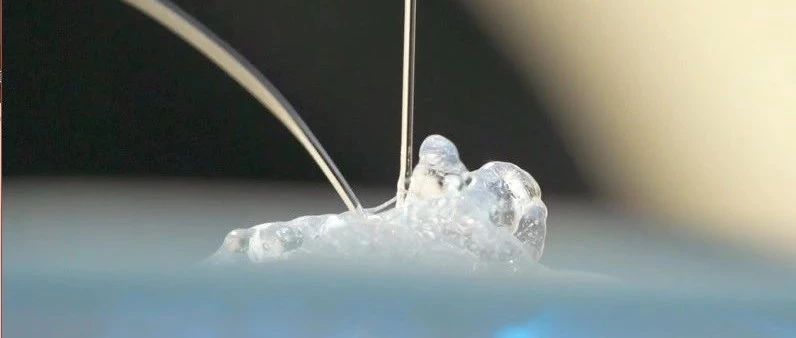
If you look at it carefully, it's still quite beautiful.
this is a simple and interesting fluid phenomenon that can be observed at home, and there is only one thing you need to do: watch the slender flow of shampoo fall from a relatively high place.
see the flow of shampoo that randomly flies out in all directions? This is the focus of this experiment, a phenomenon called the Kaye effect effect. When the liquid flow is fine and the flow rate is fast to a certain extent, this phenomenon is most easily observed.
I have filmed this phenomenon before, but it is not very clear. I have captured a clearer video material this time, so I will share it with you again. Macro and high speed are used here, so it is easier to see the details. In order to form a continuous and slim flow of shampoo, I used the device in the picture below.
in addition to shampoo, a similar phenomenon can actually be observed in things such as detergent. Here is a version I shot with detergent. If you observe with detergent, you should lower the height of the fall.
the following is the explanation of the principle:
this phenomenon occurs on viscous non-Newtonian fluids with shear thinning properties. "Shear" is a confusing term, but it actually refers to the translational friction between liquid layers. Shear thinning means that when two layers of fluid are rubbed against each other, the local viscosity decreases and becomes thinner. Shampoo is a shear thinning fluid.
Get indulged to stunning wedding dresses under 100 in website. Our collections make it a piece of cake to help you choose the perfect one.
Why is the flow of shampoo not immediately blended into the shampoo below, but ejected instead? First of all, when viscous liquids such as shampoo and honey flow down, they will "pile up" locally, coupled with the impact of falling fluid flow, and sunken "pits" will be formed in the accumulation.
these pits can become the orbits of ejected liquid flow, and it is the property of shear thinning that makes the liquid flow glide smoothly in the orbit. The flow of shampoo moves at a certain speed relative to the stationary shampoo below, so there is friction on their contact surface-thus, as mentioned above, the local liquid on the contact surface becomes thinner. This thinning liquid will lubricate the shampoo, making it easier for the shampoo to glide along the lower surface of the shampoo rather than blending in directly. The flow of shampoo meets the sunken "track", coupled with the role of the lubrication layer, can let the liquid flow "fly" above the liquid surface, this is what we see the Kay effect.
compare the side shot:
this process lasts for a short time, and the details can only be seen in high-speed photography, but it can also be seen with the naked eye.
and as to why shampoo is a shear thinning fluid, the answer is: deliberately designed like this. The design is designed to be easy to use: it is thick enough at rest to prevent shampoo from running away from your hands, and thinning during friction makes it easy to squeeze out and apply. There are some special ingredients in daily chemical products that can be used to adjust this rheology, such as "Carbomer", which can often be seen if you look at the sub-table carefully.
the experiment itself is not difficult or dangerous, but it's easy to get shampoo everywhere, so it's best to play in the bathroom. Remember to pack up before mom gets angry.